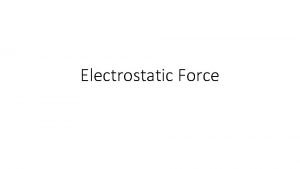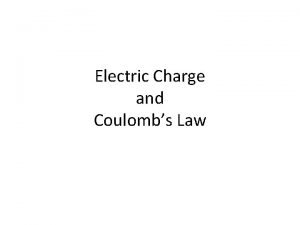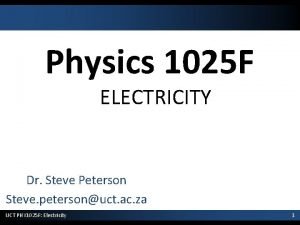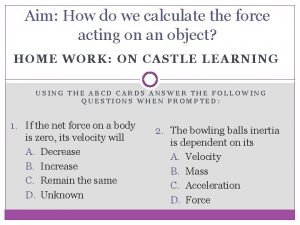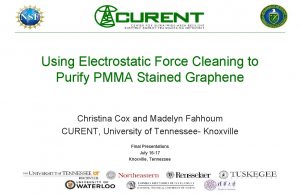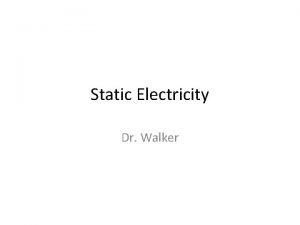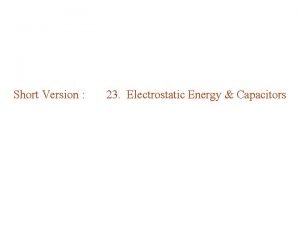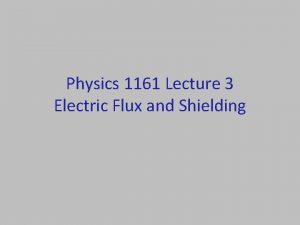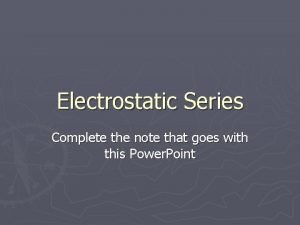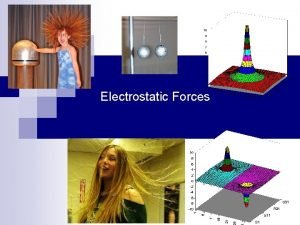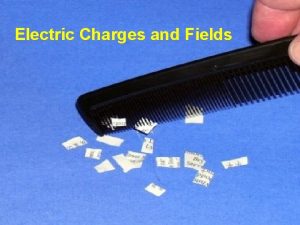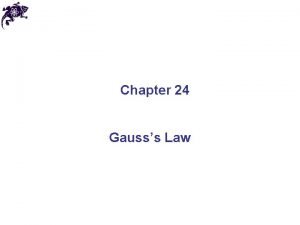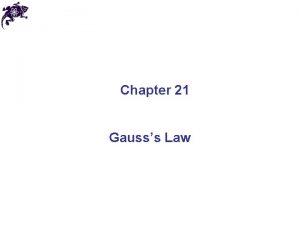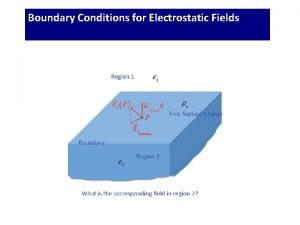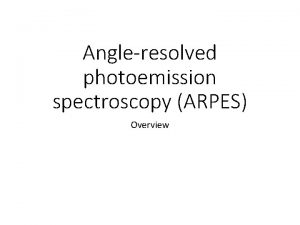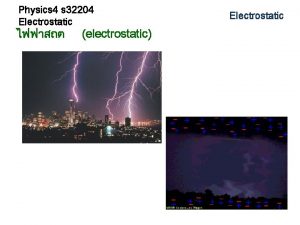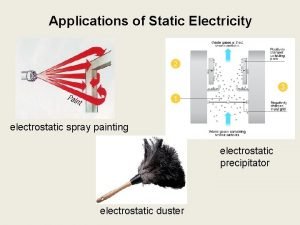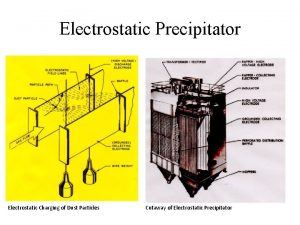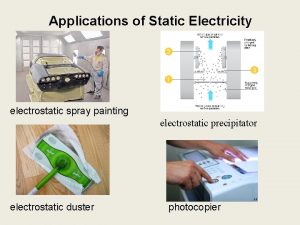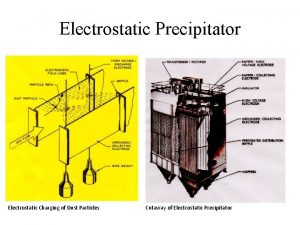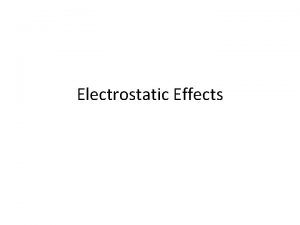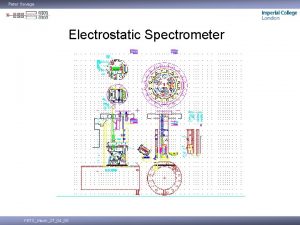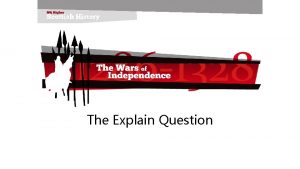Aim How can we explain Electrostatic Force Thursday


















- Slides: 18

Aim: How can we explain Electrostatic Force? Thursday, October 8 th

Homework #5 • Worksheet

Units of Charge • Coulombs (C) • 1 elementary charge: -19 (1 e = 1. 6 x 10 C) • 1 Coulomb = 18 6. 25 x 10 elementary charges

Example • How many Coulombs in 5 electrons? • How many protons make up +10 Coulombs?

Coulomb’s Law • The electrical force of attraction or repulsions between 2 charged objects


Regents: IB: • q 1 = charge on 1 st object (C) • q 2 = charge on 2 nd object (C) • r = distance between objects

2 nd IB equation: • What’s different? • k can be written in terms of another constant, ε 0, the permittivity of free space • k = 1/4πε 0

Graph of Coulomb’s Law Force Distance

• Coulomb’s Law applies to objects that are much smaller than the distance between them • Ideally used for point charges (remember point masses? )

Notice anything?

• Both are inverse square laws F 1/r 2 • Both have a proportionality to a property of each object (mass for gravity, electric charge for electricity) • Both act over a distance • MAJOR DIFFERENCE: gravity is always attractive, electric force can be attractive or repulsive

Examples • q 1 = +2. 0 C, q 2= +2. 0 C, r = 5 m. • Find F F = 1. 4 x 109 N

• q 1 = -10. 0 C, q 2= -10. 0 C, r = 2. 0 m. • Find F F = 2. 2 x 1011 N

• Find F between electron and proton, separated by 1. 5 x 10 -10 m F = -1. 0 x 10 -8 N

• If F is positive, the force is repulsive/attractive • If F is negative, the force is repulsive/attractive

Original Force Changed Variable New Force F double q 1 2 F F 4 F F double q 1 & q 2 double r ¼F F triple r 1/9 F F half q 1 & q 2 ¼F F half r 4 F F third r 9 F

Now your turn…. • A negative charge of -2. 0 x 10 -4 C and a positive charge of 8. 0 x 10 -4 C separated by a distance of 0. 30 m. F=? • A negative charge of -6. 0 x 10 -6 C exerts 65 N on second charge that is 0. 050 m away. Second charge = ? • For extra credit…Sphere A (+2. 0 x 10 -6 C) is located at the origin, Sphere B (-3. 6 x 10 -6 C) is located at +0. 6 m on the x-axis, and sphere C (+4. 0 x 10 -6 C) is located at +0. 8 m on the x-axis. What is the net force on Sphere A?
 Electrostatic force definition
Electrostatic force definition Coloumbs law
Coloumbs law Electrostatic force
Electrostatic force Electrostatic
Electrostatic Calculate the magnitude of the electrostatic force
Calculate the magnitude of the electrostatic force Electrostatic force
Electrostatic force The force aim
The force aim Electrostatic disinfection chelsea
Electrostatic disinfection chelsea Electrostatic equilibrium
Electrostatic equilibrium Electrostatic energy
Electrostatic energy Electrostatic equilibrium
Electrostatic equilibrium The electrostatic series
The electrostatic series Electrostatic forces
Electrostatic forces Electrical potential formula
Electrical potential formula What is amber effect
What is amber effect Electrostatic equilibrium
Electrostatic equilibrium Electrostatic equilibrium
Electrostatic equilibrium Boundary conditions for electric field
Boundary conditions for electric field Arpes review
Arpes review
